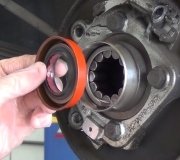Sometimes when I turn a corner to go up a hill my transmission slips, it seems to lose power to the drive wheels and it over revs. I brought it to a tranny specialist and he said it was known that the differential in this make and model have differential problems namely a seal between the differential and the transmission. Also it seems to be slipping at 80 kms an hour on the highway. But these problems aren't consistent, He checked the condition of the trans. Fluid and it seems alright I was thinking maybe the trans filter or something. Or maybe the torque converter. I would really appreciate some help. Thanks John
SPONSORED LINKS
Friday, May 6th, 2011 AT 3:10 AM




